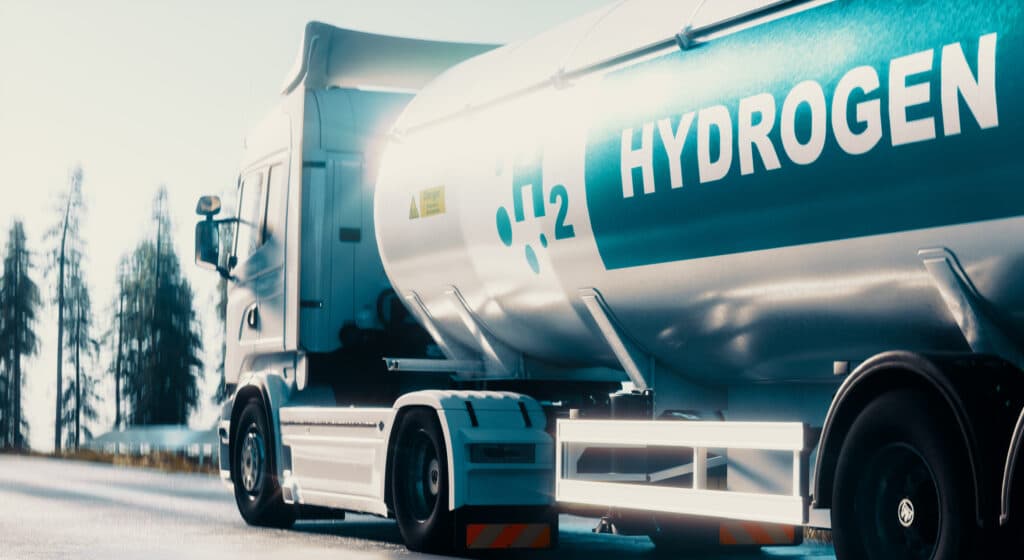Different transportation fuels have different characteristics which dictate their safety protocols. While hydrogen is considered a safe fuel, it still has the potential for harm if not handled correctly. Below, we discuss its properties and our tips for hydrogen-fueled vehicle safety.
Ignition, Oxidant, and Fuel
Hydrogen fuel safety largely depends on how well your technicians can avoid its unintentional combustion. According to the U.S. Department of Energy, this is done by accounting for three main factors: whether a heat or spark is present for ignition; whether air acts as an oxidant; and the flammable characteristics of the fuel itself.
From a chemical standpoint, hydrogen is the simplest element in the universe: two atoms bound together with one proton and one electron. This makes hydrogen very light as a gas. It’s also odorless, tasteless, and nontoxic — although how it’s sourced has the potential to affect the environment. (Check out the hydrogen rainbow for more information and how to know which types of hydrogen sourcing are more eco-friendly.)
The two primary safety concerns for hydrogen vehicles are fire and pressure. The flammability range of hydrogen is broad — between 4% and 75% concentration in air. Combined with its ignition temperature of approximately 930 degrees Fahrenheit, this makes hydrogen easy to ignite. That’s why hydrogen vehicles, maintenance facilities, and fueling stations all have special safety features designed to mitigate this risk.
Hydrogen is stored on board vehicles at extremely high pressures — either 5,000 or 10,000 psi, depending on the vehicle type. However, hydrogen storage cylinders are manufactured to stringent standards that allow fuel to be safely stored at these pressures. Because hydrogen is odorless, specialized sensors are used to identify an unintentional leak.
Hydrogen-Fueled Vehicle Safety Tips
Tip #1: Hydrogen Leak Detection
A hydrogen gas leak can be potentially dangerous in a closed environment — i.e. one where it’s difficult or impossible for the gas to dissipate. This is because it will gradually displace the oxygen that’s present and can cause technicians and other personnel to become incapacitated by asphyxiation. Therefore, a maintenance facility where hydrogen-powered vehicles are serviced must be modified to accommodate hydrogen fuel, including installation of hydrogen detection systems as well as other measures.
Tip #2: Avoid Fuel System Contamination
Dust and other contaminants have the potential to lower a hydrogen vehicle’s performance, as well as pose a risk to the fuel system and/or engine. Hydrogen vehicle fuel receptacles are required by installation code to have dust covers, and it is critical that each fuel receptacle’s dust cover or cap be placed over it when not in use.
Note: You may have a failsafe device already installed by your vehicle’s manufacturer in the form of a switch that verifies the dust cover is in place before it allows the engine to be turned on.
Tip #3: Keep Your Vehicles Away From Ignition Sources
It is unsafe to engage in any kind of activity in the vicinity of a hydrogen-powered vehicle that could create a spark that ignites hydrogen gas. This means that when you need to perform any hot repairs like welding or cutting, you must completely defuel (vent) a vehicle’s hydrogen fuel system first, and relocate any vehicles nearby that use internal combustion engines.
You’ll also want to protect all fuel system components from being exposed to hot work, welding slag, or sparks by using thermal blankets designed for the proper temperature.
Tip #4: Use a Ground Cable When Venting
When you vent hydrogen gas from a vehicle’s fuel system, static electricity is created. Ground cables protect against static discharge and accidental ignition.
Tip #5: Know Your Accident Procedures
There may come a time when one of your hydrogen vehicles is involved in an accident, which means your drivers should know how to respond. In addition to normal procedures for reporting an accident, they should also:
- Shut off the engine. This closes all solenoid valves to prevent gas from flowing to the engine.
- Listen for any potential leaks. A hissing sound is the only practical way for them to be certain.
- If a leak is present, use a shut-off valve if it is safe to do so. A driver should know the location and function of their vehicle’s fuel system manual shut-off valve, and it should be easily accessible.
If a leak is still present after these steps have been taken, the driver should notify others nearby to vacate the area immediately and call 911.
Get Training for Hydrogen-Fueled Vehicle Safety
AFVi is proud to offer the most comprehensive training on hydrogen systems in the alternative fuels market. Learn more about our available classes and their content by clicking here.
Do you have questions regarding hydrogen systems, hydrogen storage, standards for hydrogen, or safety risks? Contact us today to discuss!

